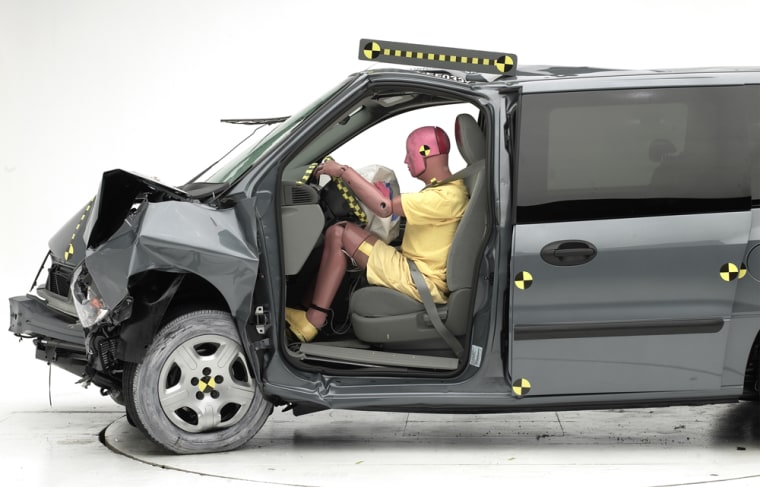If you go car shopping late next year, you should have a better idea of how well a particular vehicle will protect you on the road. It should also be a lot easier to compare 2010 models for safety.
The National Highway Traffic Safety Administration just rolled out an updated crash test program it promises will provide car buyers with better information and encourage manufacturers to design safer vehicles.
Consumer groups give NHTSA credit for tweaking its five-star rating system, but criticize the agency for not doing more.
Clearly something had to be done. This year 98 percent of the vehicles tested received four or five stars.
“If we really want the program to help consumers, we have to make the tests tougher,” says NHTSA administrator Nicole Nason. This means fewer cars will get five stars. “But that’s good for consumers,” Nason tells me. “That way they know that fifth star has real meaning.”
The new crash test program, which starts with the 2010 model year, will require better front-impact and side-impact tests. There’s also a new pole test that simulates the severe impact of smacking into a tree, telephone pole, or street lamp.
A vehicle will now be rated on its ability to prevent leg injuries in a head-on crash. These are not life-threatening injuries, but they are painful and disabling. And for the first time, a female dummy (to represent women and larger children) will be used for some of the tests. Right now, government tests are done with a dummy that represents an average man.
One other noteworthy change: Starting with the 2010 models, new vehicles will get an overall safety rating – one to five stars – that combines results from the side, front, and rollover crash tests. Specific scores for each of these tests will still be available. NHTSA administrator Nason says the overall score will make it easier for you to compare vehicles.
Along with that overall star rating, manufacturers will be required to list on the sticker whether specific advanced collision avoidance technology is available on the vehicle standard or as an option. This would include electronic stability control, a forward collision warning system, and lane departure warning system.
Consumer groups react
Consumer groups applaud NHTSA for updating its testing program. They like the pole test, the female crash dummy, and the new overall rating. But they are disappointed more wasn’t done.
“There’s no question the government has taken a step forward in providing consumers with better information than they are getting today,” says Jack Gillis, public affairs director at the Consumer Federation of America. “The bad news is they could have done more and relatively easily.”
David Champion, senior director of auto testing at Consumer Reports calls NHTSA’s changes “a marginal improvement” rather than a major shift. “They have moved the bar forward, but not particularly far,” he says. Champion hoped to see a range of dummies, including children and overweight adults, used in the crash tests.
Consumer Reports also wants the government to test electronic stability control systems to see how well they work. The magazine’s tests show some ESC systems are much better than others.
Insurance industry wanted more
The Insurance Institute for Highway Safety, which does its own crash tests, has pushed automakers to build safer vehicles. “We are glad to see some of the things the government did,” says Anne Fleming, IIHS senior vice president. “We don’t want to be overly critical, but we would like to have seen them do more.”
The institute has focused recently on fatalities caused by head-on collisions. Fleming says under the new program, frontal tests won’t change all that much. Her question: Why are 15,000 people a year dying in frontal crashes when most vehicles pass the government’s frontal test with flying colors? She wants NHTSA to study the problem and develop tests that “address the kinds of crashes people are dying in.”
My two cents
Buying a safe car takes a little research. Don’t rely on one test. See how various vehicles did in crash tests performed by the federal government and the Insurance Institute for Highway Safety. See what other information you can get from Consumer Reports and other consumer publications.
Make sure the vehicle you buy has the latest safety equipment. Side air bags are still optional on some models. Electronic stability control – one of the most important safety features you can get – won’t be required on all vehicles until 2012.
Don’t forget – the single most important thing you can do while on the road is buckle up. Seatbelts are proven lifesavers.
